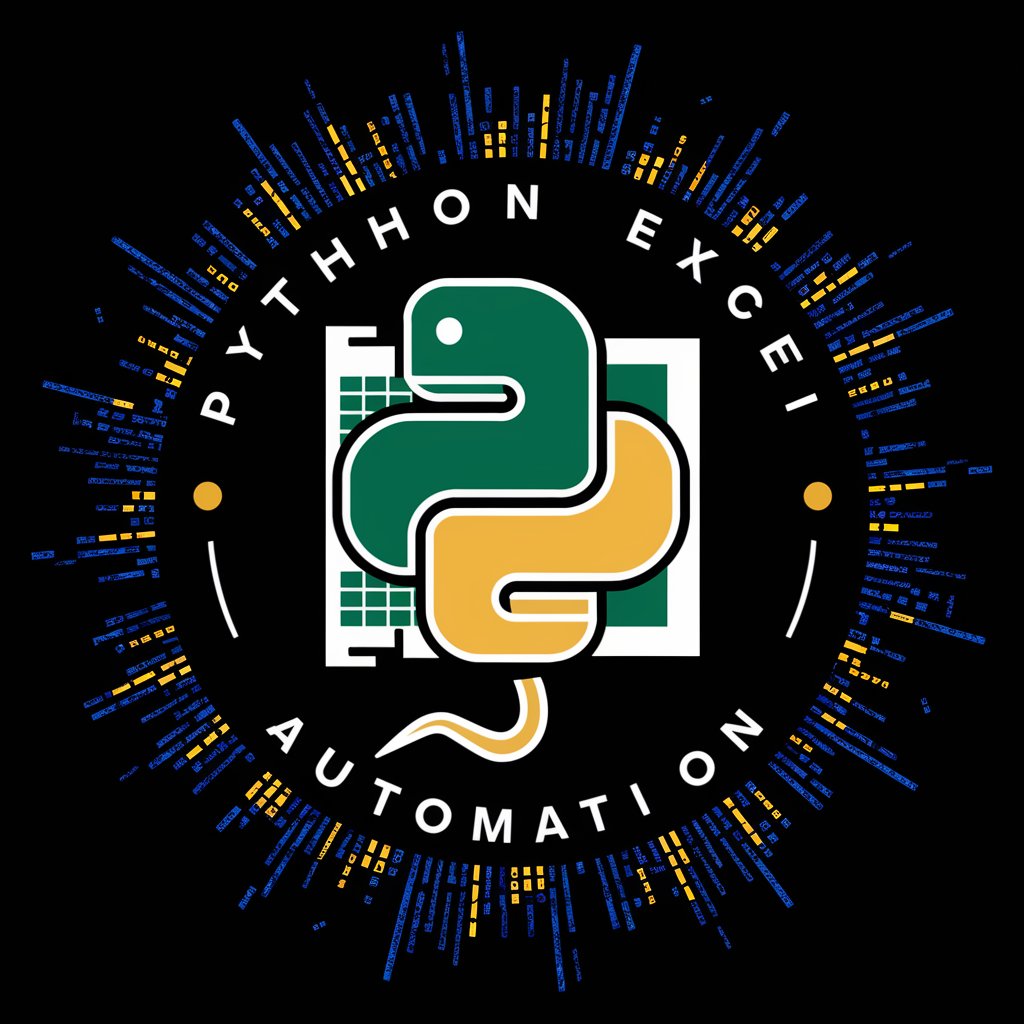Python Excel Automation - Excel Report Automation

Welcome to Python Excel Automation, your guide to mastering Excel with Python!
Automate Excel tasks with AI-driven Python.
How can I automate generating reports in Excel using Python?
What are some Python libraries useful for Excel automation?
Can you show me how to process large Excel files with Python?
What's the best way to use Python to create charts in Excel?
Get Embed Code
Introduction to Python Excel Automation
Python Excel Automation refers to the process of using Python scripts to automate tasks in Excel, a widely used spreadsheet application. This involves reading from, writing to, formatting, and performing calculations within Excel documents. Python, with its rich ecosystem of libraries such as openpyxl, xlrd, xlwt, and pandas, makes it possible to automate repetitive Excel tasks efficiently. This automation is particularly useful for tasks like generating reports, analyzing data, and managing large datasets that would be time-consuming and prone to errors if done manually. For example, a financial analyst could use Python scripts to automate the monthly generation of expense reports, pulling data from various sources, performing calculations, and formatting the report in a specific layout. Powered by ChatGPT-4o。

Main Functions of Python Excel Automation
Reading and Writing Excel Files
Example
Using pandas to read data from an Excel file, manipulate it, and write it back to a new Excel file.
Scenario
Automatically compiling data from multiple Excel files into a single summary report.
Data Manipulation and Analysis
Example
Utilizing pandas for complex data manipulations like filtering, sorting, and applying formulas across large datasets.
Scenario
Analyzing sales data to identify trends, top-selling products, and performance by region.
Automated Report Generation
Example
Generating monthly financial reports with openpyxl by pulling data from databases, formatting the output, and applying conditional formatting.
Scenario
Creating customized, detailed financial performance reports for each department within a company.
Batch Processing of Excel Files
Example
Writing scripts to process and analyze hundreds of Excel files, extracting specific data points.
Scenario
Converting a large number of Excel files into a standardized format for data analysis purposes.
Ideal Users of Python Excel Automation Services
Data Analysts
Professionals who work with large volumes of data and need efficient ways to analyze, report, and visualize data. Python Excel Automation allows them to streamline their workflow, reducing manual data entry and increasing accuracy.
Financial Analysts
Individuals in charge of financial reporting, budgeting, and forecasting. They benefit from automating repetitive tasks such as monthly report generation, financial modeling, and variance analysis.
Administrative Professionals
Those who manage large amounts of data entry, reporting, and document management. Automation can significantly reduce their workload and improve data management efficiency.
Researchers
Researchers often deal with datasets requiring cleaning, manipulation, and analysis. Python automation streamlines these tasks, allowing more time to focus on research analysis and insights.

How to Use Python Excel Automation
Start Your Journey
Initiate by visiting a platform offering educational resources or trials for learning Python for Excel automation; no account creation or premium subscription required.
Install Python & Libraries
Ensure Python is installed on your machine along with libraries like pandas, openpyxl, and xlrd for handling Excel files. Use pip install pandas openpyxl xlrd for installation.
Explore Common Use Cases
Familiarize yourself with typical applications such as data analysis, report generation, and automating repetitive tasks to streamline your workflow in Excel.
Practice with Real Data
Apply your knowledge on real datasets. Start with simple tasks like reading Excel files, then progress to writing data and creating complex reports.
Optimize and Automate
Develop scripts that automate entire workflows, reducing manual effort and errors. Continuously refine your code for better efficiency and accuracy.
Try other advanced and practical GPTs
baerio GmbH
Empowering Eco-Friendly Offices with AI

Aroa
Empower Your Tech Journey with AI

NutriGuide Expert
Empowering your wellness journey with AI

Paycheck Pro
Smart AI-Powered Paycheck Calculations

Heroine Creator
AI-powered character creation and storytelling

Código Civil Brasileiro
AI-powered Brazilian Law Explorer

Manifest Your Best Life GPT
Empower Your Goals with AI Guidance

Decision for Dummies
Unbiased Decisions, AI-Powered Insight

FramingForeman
Building smarter with AI-driven framing

Photo Insight
Unlock the Story Behind Every Photo

Artistic Framer
Custom Tribal Art at Your Fingertips

Three.js Navigator
Master 3D Web Graphics with AI Guidance

Python Excel Automation FAQs
What libraries are essential for Python Excel Automation?
Pandas for data manipulation, openpyxl for working with Excel files (.xlsx), and xlrd for reading data from older Excel files (.xls) are foundational.
How can I read an Excel file in Python?
Use pandas' read_excel() function, specifying the file path and sheet name as arguments. This loads the data into a DataFrame for easy manipulation.
Can I create charts in Excel files using Python?
Yes, with openpyxl, you can add charts to Excel files. After creating a chart object, you populate it with data from your DataFrame and insert it into the worksheet.
Is it possible to automate Excel report generation?
Absolutely. By scripting the process of reading data, analyzing it, and writing the results to an Excel file, you can automate the entire report generation process.
How do I handle large Excel files without performance issues?
Consider using the pandas library with chunksize parameter in read_excel() for reading large files in chunks, or use Dask for parallel processing to manage larger datasets efficiently.
